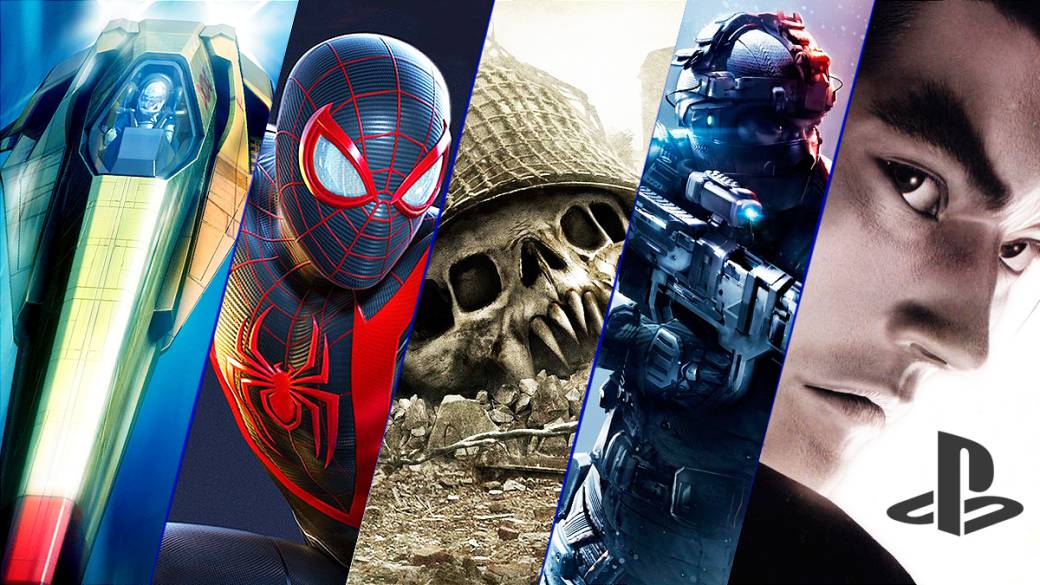
On the way to the premiere of PlayStation 5, we remember the games that accompanied its predecessors and we review those that will come with it.
It’s official now. PlayStation 5 will be released on November 19 at a price of € 499 or € 399 depending on the chosen model. And just as or more importantly, we also know the games that will be available at launch (although the cost of some may have been surprising). Figures aside, this takes us back to a tradition almost as old as the medium itself: looking at the repertoire available that first day to see which – or which – of the titles we find most palatable to make the leap to the new generation.
Although Sony is not the most veteran, with this there will already be five times that we have gone through this process with one of their desktop consoles, so we thought it would be interesting to look back and recall the four previous occasions. From the original PlayStation to the still-festering PS4, today we’ll take a look at the games that were available during their European releases to put things in perspective and compare with the imminent arrival of PS5.

PlayStation: Warming Up the Engines
The first PlayStation arrived in stores in our country on September 29, 1995, almost a year after its Japanese premiere in December 1994. At that time, the brand had not yet been firmly established, so the race with The Sega Saturn and the upcoming Nintendo 64 were still in the air. It would not be until 1997 when it would clearly escape both, changing the history of the console wars as we knew them in the nineties, although on the way there, it was already leaving several emblematic titles that are still remembered by their users today. Interestingly, despite being preceded by the American release a few weeks earlier, here we missed some already available there such as Rayman (although it came out shortly after) or Twisted Metal (that one left in early 1996), but buyers had other alternatives to quality:
- Ridge racer
Developed by Namco and distributed by Sony itself in Europe, Ridge Racer originated in arcades, but that didn’t stop it from being the console’s flagship title upon launch in any of the three regions. The arcade conversion was very successful and the audiovisual display was top-notch for its time, generating many positive comparisons to the Sega Saturn’s Daytona USA. It is true that at the track level it was somewhat scarce, offering only layout variations within the same circuit. But its staging and playability made it a critical and sales success, so the saga would not only spur several sequels (such as the great Ridge Racer Type 4), but would also return to accompany other Sony systems in their releases (for the memory remains the enthusiasm of Kaz Hirai shouting his name during the presentation of PSP).
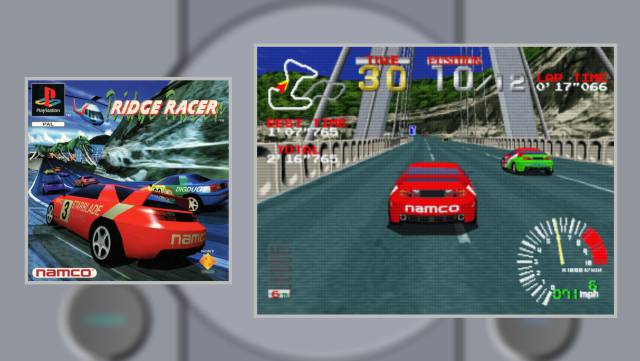
- Wipeout
Created by the British studio Psygnosis, Wipeout was both a temporary exclusivity from the European market and the start of the popular saga of the same name. Set in a distant future where hovercraft competed at breakneck speeds, the game differed from proposals like F-Zero (still far from receiving its first 3D installment) thanks to the use of weapons (thus integrating a component closer to Mario Kart, saga that the designers confirmed as influence) and a catchy electronic-cut soundtrack that would even come out separately on CD. At the controls it was somewhat more demanding than Ridge Racer, but it also had more circuits and its intensity made it another success with multiple sequels (starting with the more refined Wipeout 2097, released just a year later) that also continue to this day.

- Battle Arena Toshinden
Another premiere saga, this time belonging to the fighting genre, was Battle Arena Toshinden. Developed by the Japanese company Tamsoft, it also came to Europe from Sony and was well received thanks to its first-time, but solvent, fights in three dimensions. In addition to characters modeled with polygons and a good level of detail, the game allowed to get out of the combat plane by means of a lateral step, thus introducing full use of 3D gameplay even before being implemented by sagas such as Virtua Fighter or Tekken. It was also ahead of Soul Edge in the use of bladed weapons, curdling a fairly innovative title for its time, although in the long run it ended up overshadowed by the other big names that offered a more refined gameplay than it or its sequels.

- Jumping Flash!
A year before the premiere of Super Mario 64, a small Japanese studio called Exact launched what is considered the first 3D platform. Jumping Flash! expanded the concept of its previous game (Geograph Seal, a first person shooter with vector polygons and free movement in the style of the canceled Star Fox 2) using a more advanced graphics engine and enhancing the platform component. Although straightforward by later standards, Jumping Flash! It was an original and groundbreaking experience, since it allowed to move and jump up to three times in the air through three-dimensional scenes of a certain amplitude. In addition, the first person freed him from the complications that other exponents of the genre would deal with by dissociating the camera from the character, automating the look down in double and triple jumps so that players were clear where they were going to land.
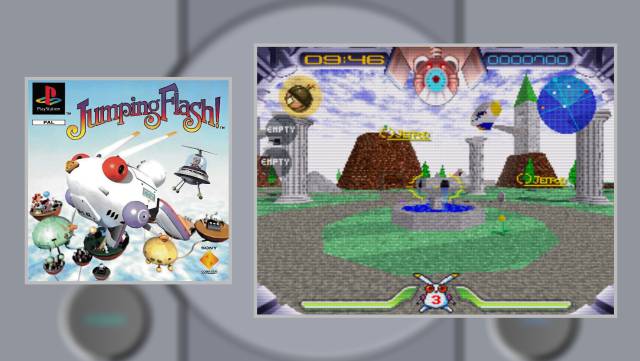
Other games that accompanied the first PlayStation in those days were 3D Lemmings (three-dimensional version of the classic puzzle where we had to lead a group of creatures through the levels), Kileak: The Blood (futuristic FPS in the key of dungeon crawler), Novastorm ( a rail shooter that simulated 3D scenarios through the use of FMV) and Rapid Reload (a 2D Gunstar Heroes run and gun that happened without pain or glory). It was not as wide a selection as that of later consoles, or as that of the American launch itself, but it was enough to offer something of interest to practically any player.
PlayStation 2: The new king takes hold of the throne
Upon arrival on November 24, 2000, the PlayStation 2 situation was very different from its predecessor. With legendary sagas such as Final Fantasy, Gran Turismo, Resident Evil or Metal Gear in its repertoire and more than 100 million consoles sold, Sony had emerged as the new market leader. Withdrawn from the 32-bit race somewhat early, Sega tried to fight back with Dreamcast, but their efforts did not bear the expected results and left almost free way for the success of a PS2 that was once again ahead of Nintendo and also the first console bet from Microsoft with Xbox. His debut in Japan (in March of that year) was somewhat timid, but both in America and here he landed with a much broader and more varied catalog. Let’s look at some highlights:
- Tekken Tag Tournament
Still present since its inception, the launch of Tekken 3 in 1998 consolidated the Namco saga as the great fighting star on PlayStation, so launching the new console with another installment was a logical move. First released in arcade games in 1999, Tag Tournament had been created using the same engine as Tekken 3 itself, so it was thoroughly revised when making the leap to PS2. This version had better graphics and some playable settings, as well as new ways to extend its life in the home format. Although Tekken 5 would end up being the Tekken 3 of the console, the conception of Tag Tournament as a compilation with almost all the fighters of the saga – until then – pushed its figure above thirty and kept it as one of the best options, something bolstered by the subsequent disappointment of some fans with Tekken 4.
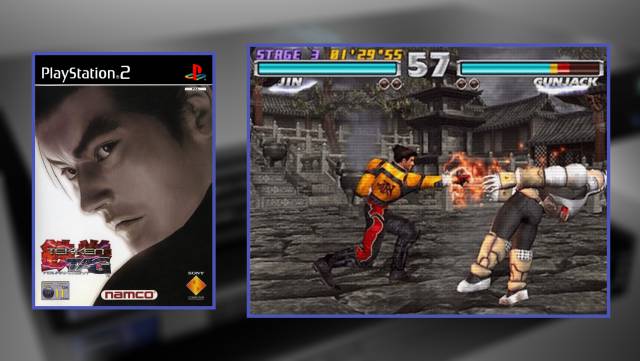
- SSX
Electronic Arts did not miss the appointment with annual sports deliveries such as FIFA 2001, NHL 2001 and Madden NFL 2001, although in the middle of them it stood out the premiere of SSX, a Snowboarding franchise also developed by EA Canada (the FIFA study). Although the first PlayStation had already received several representatives of this genre (such as the Cool Boarders saga or EA’s own Big Air), nothing had finished standing out at the 1080 ° Snowboarding level. SSX changed that, raising the bar considerably not only in the graphics realm, but also in the playable – both in terms of control and layout design – and even the sonic, with dynamic music that reacted to the player’s performance. As a result, it became the most acclaimed game of the launch and spawned several multiplatform sequels (the original remained a PS2 exclusive).
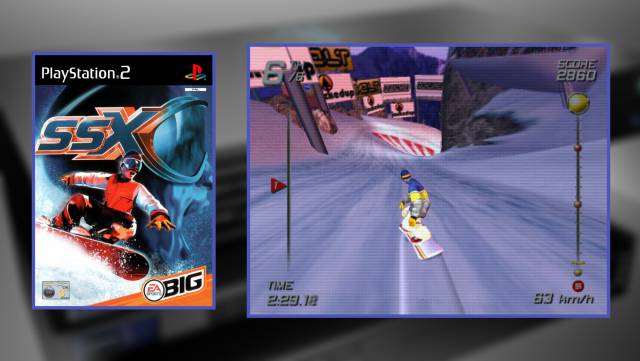
- TimeSplitters
During the development of Perfect Dark, a group of developers left Rare and formed another studio called Free Radical. His first project was TimeSplitters, an FPS that also followed the teachings of GoldenEye 007, but with more humor and time travel to drastically vary the setting and weaponry of each level. So as soon as we were firing 1930s Thompson machine guns into an Egyptian tomb as we were using plasma ammunition on an alien planet. The story was fairly short and trivial, especially next to Perfect Dark, but it was enhanced by challenges, a map editor, and tons of multiplayer modes with dozens of characters to choose from. That’s where TimeSplitters shone, and it garnered enough attention that Free Radical developed two even better sequels (TimeSplitters 2 and Future Perfect). As in the case of SSX, both were cross-platform, but the original remained a PS2 exclusive.
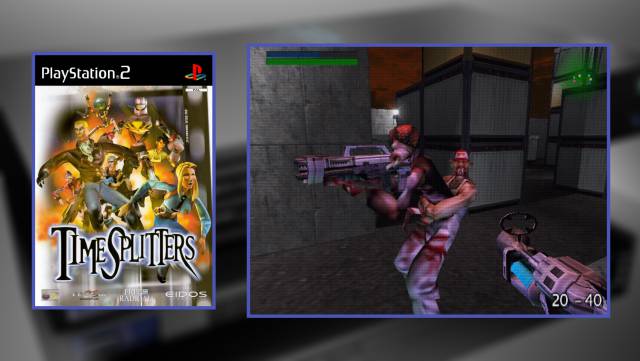
- Midnight Club: Street Racing
Before being renamed Rockstar San Diego and going down in history as the studio responsible for the Red Dead saga (Revolver and Redemption), Angel Studios achieved some notoriety by signing the crazy Midtown Madness for Microsoft. The game caught the attention of Rockstar, who shortly after joined forces with them to create Midnight Club. The saga premiered alongside PS2 and took up the concept of exploring a city (or rather two, London and New York) aboard a vehicle, but in a more serious tone than Midtown Madness and with a clear focus on street racing . These allowed to win cars and vehicles and be increasingly competitive, in addition to fueling the collector’s satisfaction of the player. Released a year before Grand Theft Auto III, Midnight Club was a nice appetizer of things to come and also received a couple of sequels of its own before the end of the build.
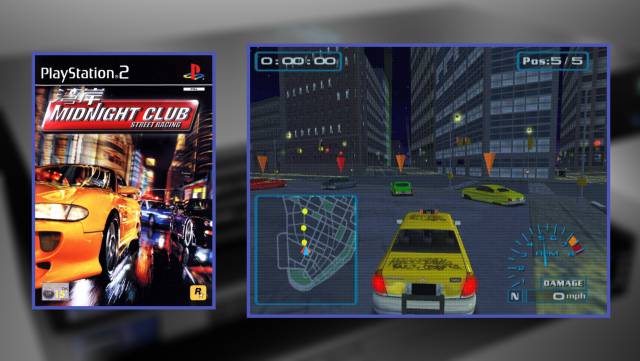
Although these are the ones that we have decided to highlight, it should be noted that the initial PS2 catalog gave more of itself. While PS1 had not reached the ten games available, its successor doubled the offer. Ridge Racer V maintained the tradition started by the original, Wild Wild Racing offered a somewhat looser alternative with off-road racing, Aqua Aqua was the sequel to one of the most original puzzle games on Nintendo 64 (Wetrix), Sony also became went into that terrain with Fantavision (where you had to create chains with colored fireworks), Koei launched Dynasty Warriors 2 (the first of many sequels), while Konami replicated FIFA with International Superstar Soccer and also carried the first Silent Scope (light gun shooter that lost grace without a gun). A great start for a console that before the end of 2002 was once again the undisputed leader of the generation.
PlayStation 3: The Giant Staggers
With more than 150 million PS2s sold, Sony approached its third generation with renewed confidence, although perhaps too much. Although the Japanese and American launches took place in November 2006, here we had to wait until March 23, 2007. By then, Xbox 360 had been available in all regions for more than a year, and even Nintendo’s experimental Wii was sold. overtook him in Europe. To this delay we had to add the comings and goings with a control without vibration (the Sixaxis), opting for a much higher price than the competition and also a more complicated architecture for the developers than those of PS1 and PS2 in their respective generations. This fueled interest in Microsoft’s machine and resulted in a more lukewarm release in terms of catalog and sales, although not without interesting games:
- Resistance: Fall of Man
Coming from creating two of the most popular platform sagas from Sony’s previous consoles (Spyro the Dragon and Ratchet & Clank), on PS3 Insomniac Games surprised with the announcement of Resistance, a warfare FPS that explored an alternate world invaded by insectoid soldiers. This premise allowed it to take a somewhat different approach from other shooters such as Call of Duty or Killzone by combining the setting and weaponry of the 50s with the most fantastic designs of the creatures and their alien technology. Although some voiced their disappointment at Insomniac’s move to a more saturated genre, Resistance was very well received and became a trilogy with two portable spin-offs.
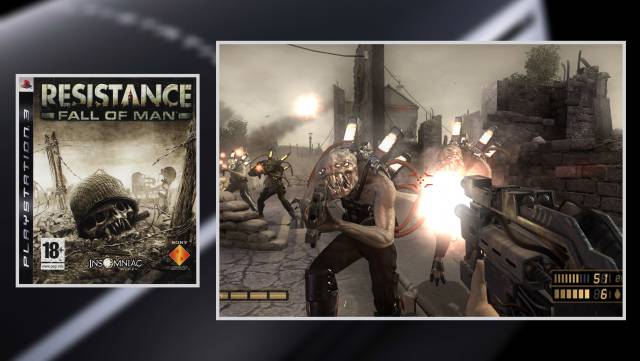
- MotorStorm
Another launch title that curiously also ended up becoming a trilogy was MotorStorm, an off-road racing game created by Evolution Studios. After the experience gained with the PS2 World Rally Championship series, the British studio moved to a more arcade and wild driving experience, where in addition to rally cars, we drove SUVs, motorcycles or quads. These vehicles had their own handling and could compete simultaneously, without sticking to their own categories, so the races were crazy before even taking into account the obstacles posed by the circuits. These, in addition, created a more organic environment than usual, since both the loose parts and the deformations in the terrain created by the vehicles themselves had a tangible impact that could condition subsequent laps.

- Virtua Fighter 5
One of the few multiplatform games that arrived earlier on PlayStation 3 than on Xbox 360 in those days was Virtua Fighter 5. In the long run it would translate into a lower version as it does not have online multiplayer, but here we talk about the launch, and the truth is that in March 2007 there were few options to rival the latest installment in the series developed by Sega AM2. Based on the second revision of the game (called Version B, the first to come out of Japan also for recreational purposes), Virtua Fighter 5 was a relatively conventional fighting game in its proposal, but the high level of graphic detail, its playable depth and the full Quest mode kept him as one of the benchmarks of the genre even as other major contenders began to appear.
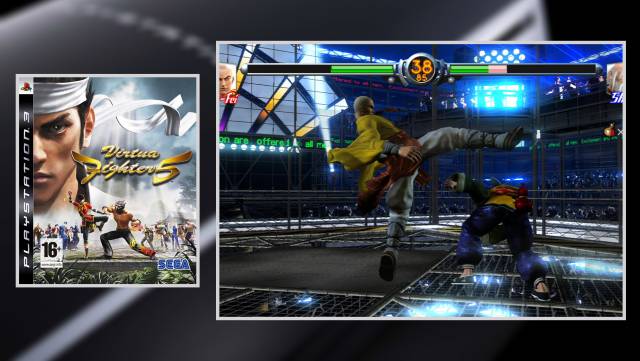
- flOw
As much or more than any specific game, one of the most important novelties that PS3 brought at its launch was the arrival of the PlayStation Network, a digital platform where not only high or medium profile titles had room, but also more humble and original proposals that they would hardly exist in physical form. One of them was flOw, thatgamecompany’s debut feature that originated on PC, but made the leap to Sony’s console in an improved version that soon caught the attention of those interested in alternative proposals. The game consisted of the consumption and survival of aquatic microorganisms, giving more importance to audiovisual immersion than to the pursuit of specific objectives. Although it was perhaps not the most striking for the general start-up audience, it gradually built a reputation and ended up being the most downloaded game on the service in 2007, in addition to receiving “spiritual” continuity through the still more acclaimed Flower and Journey.
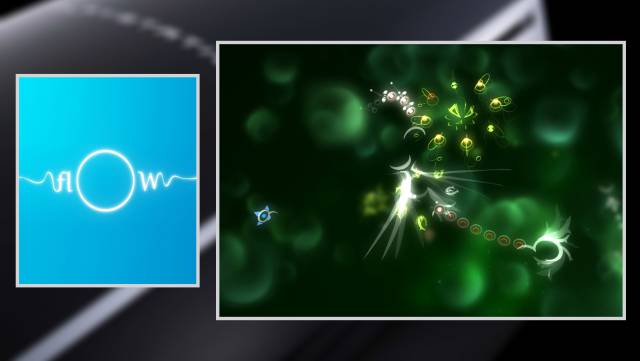
Looking at the rest of the catalog, although there was no lack of quality games and the figure was again comparable to that of PS2, the delay with respect to the American launch meant that many of its exit games had already been available for months on European Xbox 360. This was the case with games like Call of Duty 3 (also with a previous version on PS2), Need for Speed: Carbon, Sonic the Hedgehog, Marvel: Ultimate Alliance, NBA 2K7 or Fight Night Round 3. Yes, simultaneously it was the arrival of others like Virtua Tennis 3 or Def Jam: Icon, and Sony also released the exclusive Formula One Championship Edition, in addition to recovering the Japanese action saga Genji with a sequel subtitled Days of the Blade, perhaps best remembered for the giant crab that appeared during its presentation. than by the game itself. As usual, it was once again a solid and varied line-up in its offerings, although this late multiplatform, the lack of larger exclusives and the price caused a slow start from which it would take time to recover.
PlayStation 4: Nothing random
A long generation and a growing number of compelling games allowed PS3 to grow steadily to exceed 80 million consoles sold, but it was clear to Sony that they had to make some adjustments if they wanted its successor to have a more enjoyable journey. Released in Europe on November 29, 2013, months before the Japanese premiere itself in February 2014, PS4 only left Xbox One a week ahead (not even that in America, where it was ahead of it), it came at a more competitive price and it also offered a more developer-friendly architecture. Of course, given the enormous growth of the Xbox brand during the previous generation (360 also exceeded 80 million), a large part of the initial catalog was multiplatform again, although some titles stood out in the middle:
- Killzone Shadow Fall
Just as PS3 had Resistance, on PS4 Sony once again bet on another FPS as one of its great starting projects. Of course, this time it was not a premiere saga, but the fourth main installment of Killzone. Developed again by the Dutch Guerrilla Games, Shadow Fall was a first-rate technical deployment and expanded the scale of the scenarios to offer more options when facing confrontations – including stealth -, in addition to a multiplayer worked. Over the years it would be overshadowed by other first party productions, including Guerrilla’s own Horizon Zero Dawn, but with a view to releasing the console it was a solvent shooter and the best showcase of its visual potential.
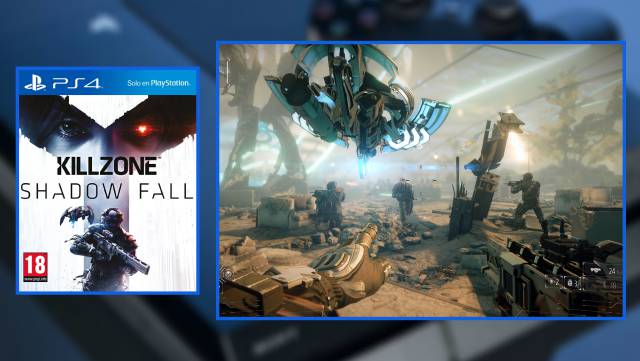
- Knack
Created by an internal Sony studio and led by Mark Cerny, one of the main thinking heads behind the architecture of PS4, Knack proposed a return to the days when Sony consoles were populated by pets like Crash, Spyro or Jak. In some of which Cerny himself had been involved in one way or another. On paper it was the perfect counterpoint to Killzone and the premise was also quite original: Knack, the protagonist, was made up of small relics that allowed him to change size or even material to fight enemies and solve some puzzles. In practice, unfortunately, it was far from convincing everyone due to its extreme simplicity, although it was successful enough to receive a sequel several years later.
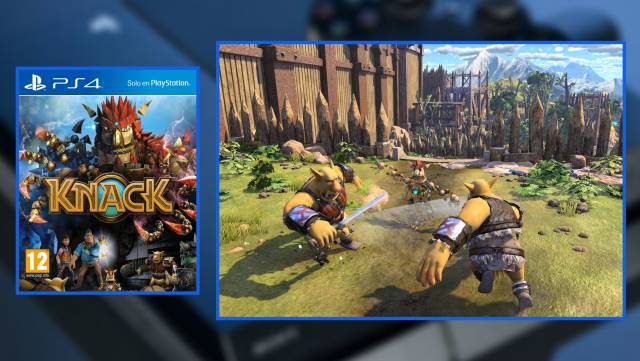
- Resogun
Aware of the growing pull of digital games, Sony also counted on the Finnish Housemarque (responsible for Super Stardust on PS3) to accompany the premiere of PS4 with an exclusive high-quality shoot ’em up. Short, but challenging and very replayable, Resogun was perhaps less appealing to the general public than games like Killzone or Knack, but in return it was as much or more acclaimed by fans of the genre thanks to its combination of classic gameplay (an enhancement of the side scrolling in two directions from the Defender school) and the new possibilities in terms of effects, particles and number of enemies on screen that the extra power of the console provided.
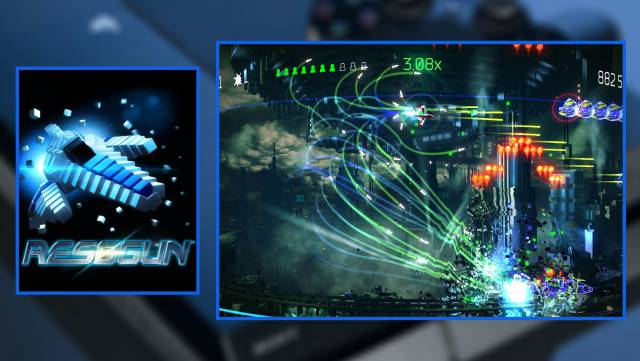
- Assassin’s Creed IV: Black Flag
Released first on PS3 and Xbox 360, the new installment of the prolific Ubisoft saga arrived less than a month later on PS4 and Xbox One, thus inaugurating a transgenerational trend that would be quite common during the first months of both consoles (Dragon Age: Inquisition , Shadows of Mordor, Wolfenstein …). The game as such was the same, recovering the pirate theme, the possibility of sailing the sea and a more open exploration than in previous deliveries, but it benefited from tweaks such as higher resolution textures, better physics in the water, reactive vegetation to the character and better overall performance. Although it was perhaps not a generational leap in the strict sense, it did invite interested users to consider waiting a few weeks to play an already remastered version for practical purposes.
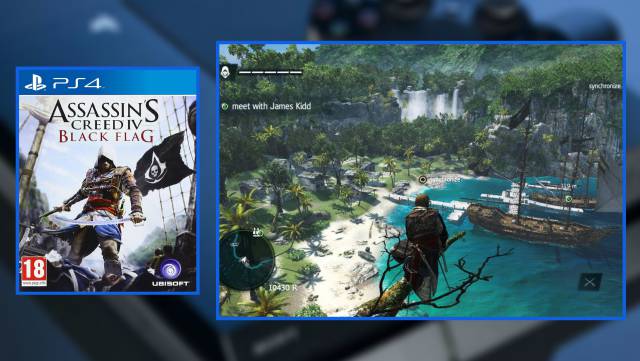
Beyond Black Flag, noted for renewing the saga and offering a wide-ranging adventure, similar practices could be seen in games like Call of Duty: Ghosts, Battlefield 4 or Need for Speed Rivals. Of course, sports titles such as FIFA 14, NBA 2K14 or Madden NFL 25 were not lacking either, nor were more original proposals such as Contrast (puzzle adventure with noir aesthetics) or Tiny Brains (also about puzzles, but focused on animals with super powers that solved tests from laboratory). Sony also took advantage of PSN to recover PS3 and Vita games such as flOw, Flower, Escape Plan or Sound Shapes. Again, a bit of everything, without major disruptions, but laying a solid foundation to keep up with Xbox from day one and then add the great exclusives (Bloodborne, Uncharted, God of War) that would allow to recover the lost margin during the previous generation. To this day, PS4 already rises above 110 million, thus surpassing the first PlayStation.
PlayStation 5: The future is here and it’s cross-gen
November 19, 2020. As we said at the beginning of the text, that is the date on which PS5 will go on sale in Europe. Which is just a week after its American and Japanese releases, and surely not far from the Xbox Series X / S, also dated for November. So the terms and the prices of the consoles are again very tight, returning almost all the prominence to the games. Of course, the games themselves pose their own peculiarities because last night’s event (and post-event) has made it clear that the transgenerational trend seen in the jump from PS3 to PS4 is not only maintained, but is even accentuated in this new stage. Let’s look at some of the highlighted cases:
- Spider-Man: Miles Morales
As his title indicates, Miles Morales is the new Spider-Man of Insomniac Games and comes with his own story and, apparently yesterday, also a more forceful repertoire than that of his partner Peter Parker. The funny thing is that this new installment, apparently halfway between a sequel and an expansion of the one released on PS4 a couple of years ago (its price is lower than other launch games), will arrive both separately and in a special edition that also It will include a remastered version of the previous game. And the thing does not end there, because in return, Miles Morales will also be released on PS4, so users of both consoles can have both games in the one of their choice.
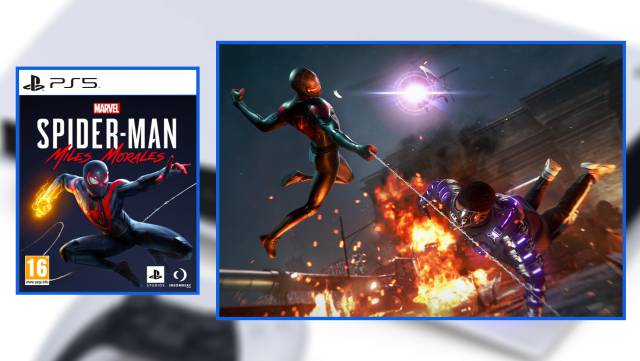
- Demon’s Souls
We already knew that Bluepoint Games was making a luxury remake from the PS3 classic, father of the Souls phenomenon and a game that still maintains a strong identity of its own against Dark Souls thanks to ideas such as trends, a unique boss selection and settings of It rises like the Tower of Latria. Now, in addition, we know that it will arrive in time to release the console. And what will there be other versions? In a strange slip, the trailer alluded to both a PC version and possibly another PS4 (defining it as “exclusive PlayStation”, but alluding to a temporary component). The PC version was debunked by Sony shortly after, so it may be left to that, a slip. What surely will not fail is the work of Bluepoint, which has already set the bar through the roof in Shadow of the Colossus.

- Cyberpunk 2077
With this, of course, we already said that it was multiplatform and cross-gen from almost the beginning, although it surely does not make it less attractive for fans who have been waiting for its arrival for years. CD Projekt comes from establishing itself with The Witcher 3, one of the great RPGs of the generation and literally the most awarded game in history (in case someone keeps track of those things). So there is a logical interest in seeing what they achieve now that they go from medieval fantasy to cyberpunk and offer first-person perspective, driving through a high-density city and also a more moldable gameplay, with characters and abilities that at times they can remember to classics of the genre such as the Deus Ex saga.
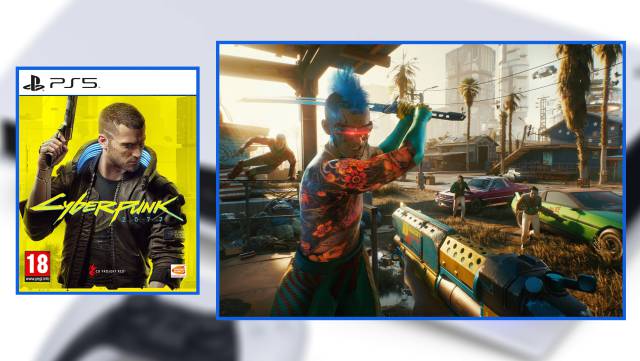
- Destruction AllStars
Since none of these games will be out until November and we are not sure which ones will emerge when the moment of truth comes, we are going to break the mold and highlight five instead of four. This is how we make room for Destruction AllStars, a multiplayer proposal edited by Sony itself and developed by the British studio Lucid Games. Although it has not been the one that has generated the most attention since its announcement at the June event, it is a new saga, exclusive to PS5 (at least as far as we know) and with a very crazy concept: cars and fighters on foot give each other cakes in arenas with ramps, platform elements and traps. Many have been the attempts to reinvent online competitions that have passed without pain or glory, we will see if this joins the group or has more luck.
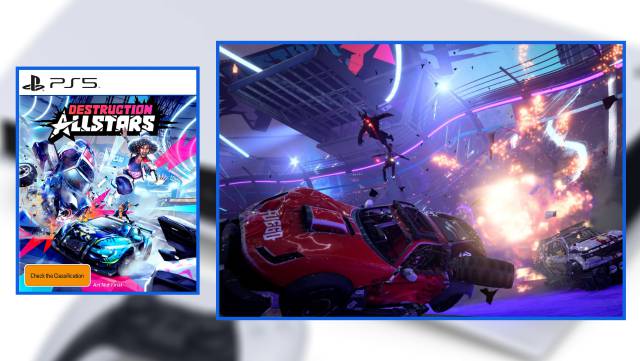
- Sackboy: A Big Adventure
Originating from the platform publisher LittleBigPlanet, the endearing Sackboys soon became the mascots of PS3, starring not only in several sequels to that same series, but also in other spin-offs such as a go-kart game or a Move-centric minigame. But A Big Adventure is no longer so mini (the title seems reliable) and comes from the hand of Sumo Digital to offer a complete platform experience, with multiplayer and for the first time not limited to the characteristic side scrolling, remembering in the process what was proposed by Super Mario in recent installments like 3D Land and 3D World. It is the most “family friendly” bet of the launch that, hopefully, appeals to fans of the genre regardless of their age. It will also be released on PS4.

Other games available on the first day will be Fortnite (of course!), Devil May Cry 5: Special Edition (revision of the PS4 game with Vergil as a playable character), the newly released Marvel’s Avengers, as well as better optimized versions of games that will come out. on the way to its release as Assassin’s Creed Valhalla or Watch Dogs: Legion. As we said before, the future is cross-gen, and not just the immediate one, since 2021 games like the very sequel to Horizon have been confirmed as such. It is clear that the transitions between generations are more gradual than ever, which from a certain point of view can detract from the charm of what were previously events that significantly shook the industry. But from another, it also gives players more options when choosing where and how to play each game.
